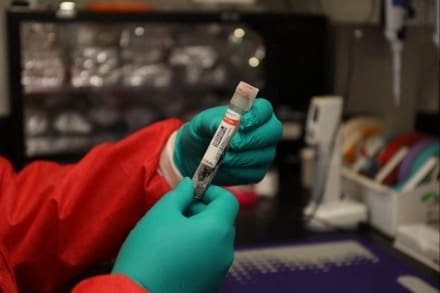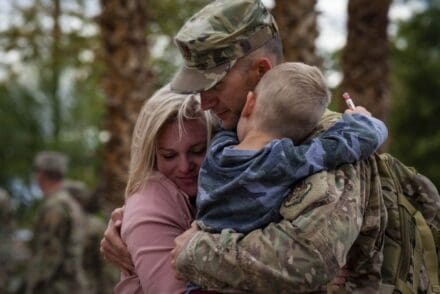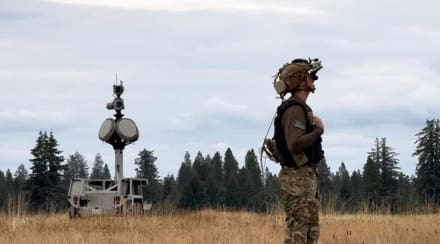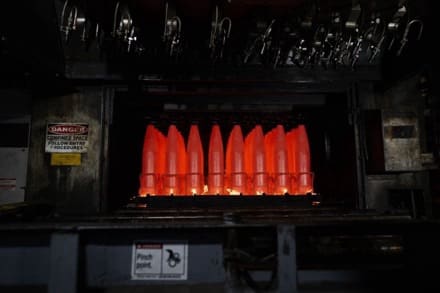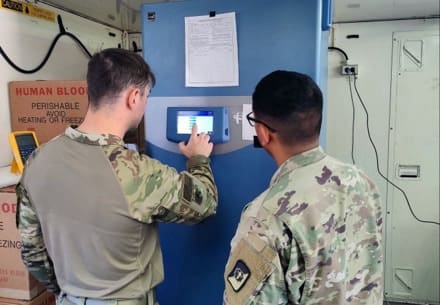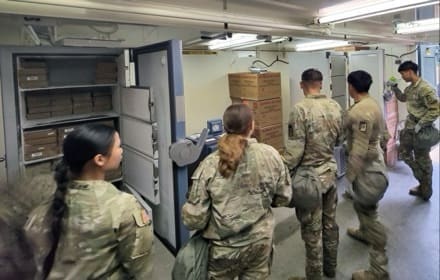Altitude sickness emerged as a human concern thousands of years ago, and not just out of thin air. Even with years of studying the symptoms and impact on the body, it still affects many people who ascend to altitudes above 8,000 feet.
The U.S. Army Research Institute of Environmental Medicine and the University of New Mexico are creating a predictive tool to transform the way altitude-related health illnesses are managed and prevented during military operational exercises.
“Altitude can really knock a person off their feet,” says Beth Beidleman, Sc.D., the study’s Principal Investigator and Research Physiologist in the Military Performance Division at USARIEM.
Acute mountain sickness may cause an individual to have headaches, nausea, vomiting, dizziness and severe fatigue due to the lower air pressure and decreased availability of oxygen in the environment at higher altitudes. Generally, the higher in altitude you go; the sicker you get, but the sickness is highly individualized. Some may get sick while others will be just fine. Typically, the sickness peaks between 18 to 24 hours and then resolves over the next two to three days.
“AMS affects everything a person does. You can’t run, think and even breathing is difficult. It also jeopardizes physical and mental performance,” Beidleman said. “While there are medications available to reduce symptoms, they are not always effective, and it is uncertain whether they negatively impact physical performance. We want to help our Soldiers and enable them to complete their mission, and that is what this study is about.”
The current tool is a wearable wrist monitor that tracks the amount of oxygen in the body’s bloodstream and links this health information to the patented AMS_alert algorithm, which predicts an individual’s likelihood of experiencing AMS four to eight hours before symptoms.
Over a period of six weeks at USARIEM’s High Altitude Research Laboratory in Pikes Peak, Colorado, data was collected from 32 active-duty Soldiers from Fort Riley, Kansas, and the Human Research and Development Detachment in Natick, Massachusetts, with the goal of improving the AMS_alert algorithm’s accuracy.
With this algorithm, leaders can see who may be at high risk early in the altitude exposure and possibly prevent injuries and casualties that could occur later in the exposure. This was the last iteration of the study conducted to expand the altitude range from the previous version at 12,000 feet above sea level at Taos Ski Valley, New Mexico to over 14,000 feet, so that the AMS_alert algorithm includes higher altitudes.
“Hypoxia monitoring can help detect future altitude sickness and therefore allow early intervention so that Soldiers can complete a successful mission. The goal is to have a smart phone application that houses the algorithm to provide a green, yellow and red alert to leaders and Commanders in the field on the health status of their Soldiers,” Beidleman said.
Every morning for two weeks, each cohort of Soldiers had a typical rhythm of waking up at 6:00 a.m., providing a saliva sample, a blood draw, and a urine and fecal sample, and reporting symptoms of AMS. The participants then had breakfast before they performed a breathing test, cognitive function assessment and ultrasound of their lungs and spleen. The morning ended with an all-out two-mile run and a two-to-three-mile hike. Following lunch, Soldiers participated in alpine training offered by physicians with experience in Mountain Medicine from the University of New Mexico. At the end of the day, participants completed additional AMS questionnaires.
“Everything the Soldiers did at altitude over the course of four days, from waking up in their bunks in the High Altitude Reasearch Lab to hiking in the mountains, was conducted at 13,500 to 14,300 feet,” said Beidleman.
One goal of this research is to replace the Environmental Symptoms Questionnaire with a diagnostic blood or urine test, given that Soldiers typically underreport their symptoms. To do this, Beidleman is analyzing metabolic and genomic biomarkers that have been previously shown to diagnose AMS.
Another mission in this research is to collect these biomarkers at sea level, prior to deployment, to assess whether an individual has a high likelihood of getting sick at altitude. Beidleman notes that genomics play a role in every other sickness, including cancer and Alzheimers, and likely plays a role in altitude illnesses as well.
In addition to using this tool to predict AMS, it could potentially be used to mitigate life-threatening events such as high-altitude pulmonary edema — fluid in lungs — and cerebral edema — fluid in brain — that can develop at high altitude by providing alerts prior to such events from occurring. Although these illnesses are relatively rare, these events require immediate evacuation.
“One thing about the wearables is that they monitor various physiologic metrics like heart rate and sleep activity, but we also want to compare current FDA-approved technology to validate our proprietary devices that will house the AMS_alert algorithm,” said Melissa Mcinnis, Oak Ridge Institute for Science and Education fellow at USARIEM.
This research has become one of USARIEM’s biggest multi-divisional and collaborative studies. While collaborating with experts at the University of New Mexico, USARIEM is also working with the Walter Reed Army Institute of Research, Air Force Research Laboratory.
“Acute mountain sickness can be a debilitating condition. With this tool, Warfighters will be able to make better informed decisions before the onset of more severe symptoms,” said Steven Landspurg, ORISE fellow at USARIEM.
The research team aims transition to the U.S. Army Medical Materiel Development Activity for launch of the app by early fall of 2025. Beidleman says that this tool can go beyond military purposes and expand to civilian use.
USARIEM is a subordinate command of the U.S. Army Medical Research and Development Command under the Army Futures Command. USARIEM is internationally recognized as the DOD’s premier laboratory for Warfighter health and performance research and focuses on environmental medicine, physiology, physical and cognitive performance, and nutrition research. Located at the Natick Soldier Systems Center in Natick, Massachusetts, USARIEM’s mission is to research and deliver solutions to enhance Warfighter health, performance and lethality in all environments.
Story by Maddi Langweil
Medical Research and Development Command


